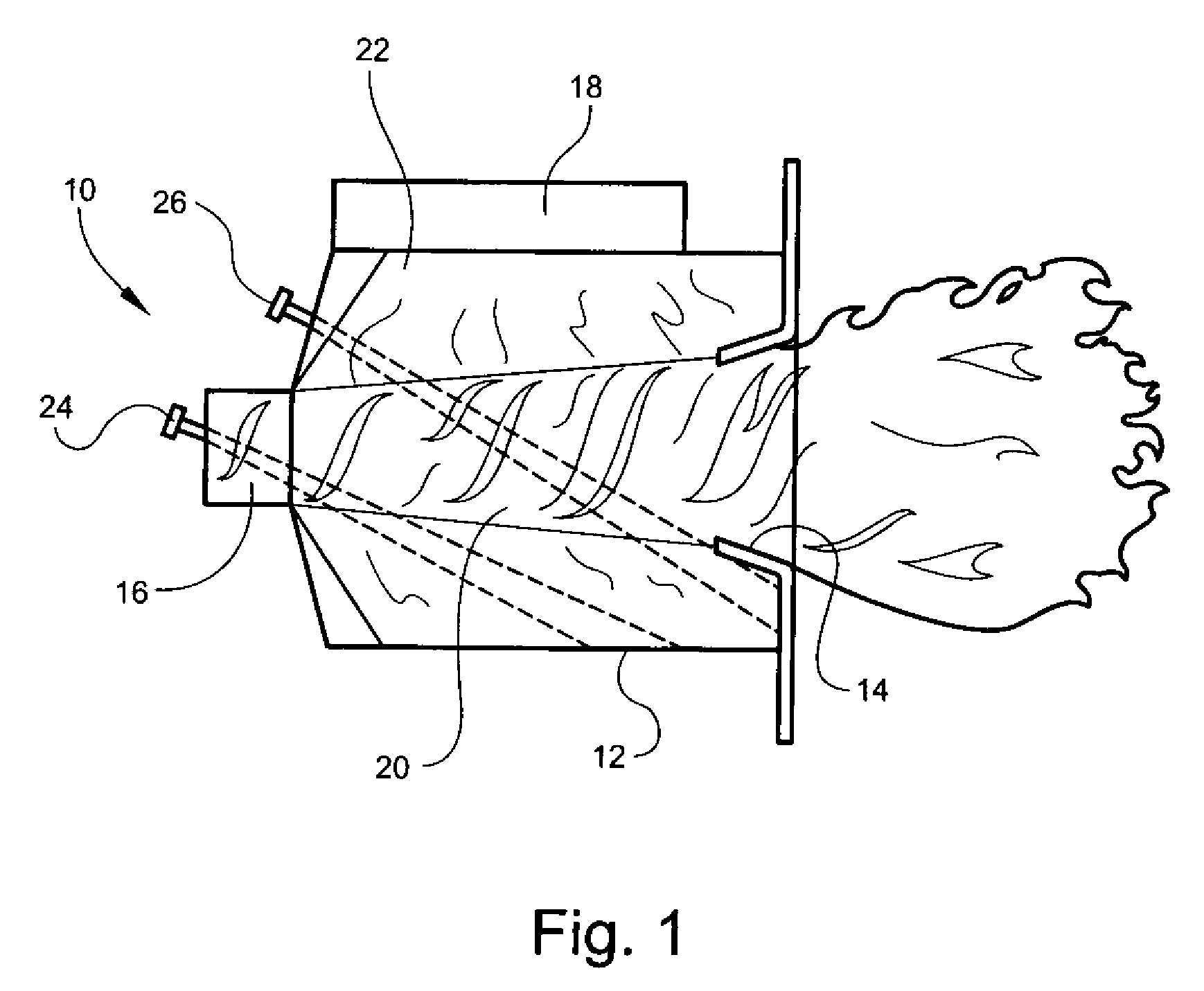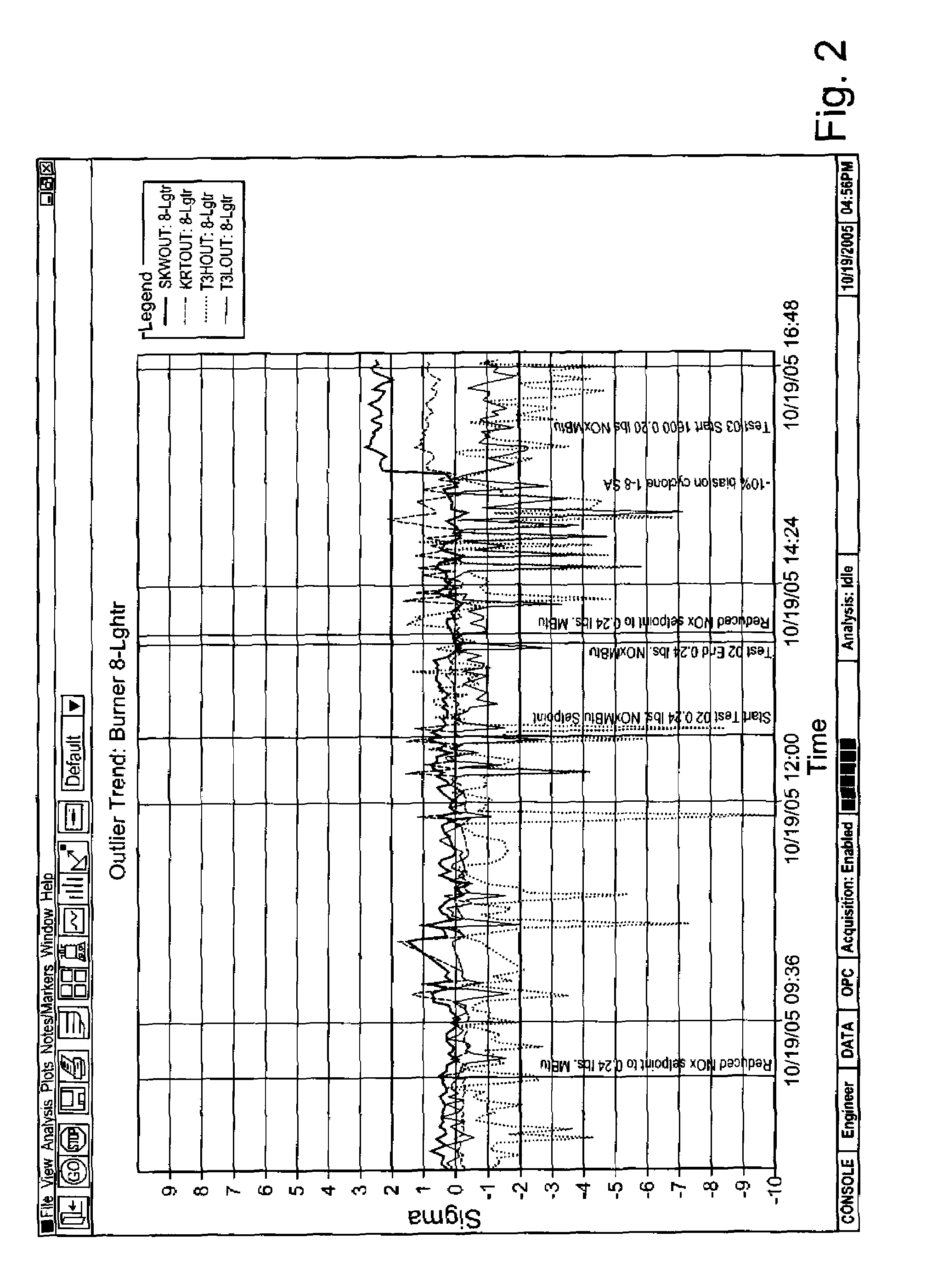Method for controlling air distribution in a cyclone furnace
a cyclone furnace and air distribution technology, applied in the direction of temperatue control, flame sensor, solid heating fuel, etc., can solve the problems of high nosub>x/sub>emission, inefficient boiler control, corrosion and wastage of the refractory walls of the cyclone barrel, etc., to improve the resolution of analysis techniques
- Summary
- Abstract
- Description
- Claims
- Application Information
AI Technical Summary
Benefits of technology
Problems solved by technology
Method used
Image
Examples
Embodiment Construction
[0043]Referring now specifically to the drawings, a typical cyclone of the type utilized in the practice of the methods according to this invention is shown generally in FIG. 1 at reference numeral 10.
[0044]The cyclone 10 includes a barrel 12 having a re-entrant throat 14. A burner 16 is mounted so as to project a flame into the re-entrant throat 14. The burner 16 may be of the radial, scroll or vortex type. A secondary air throat 18 mounted in an offset position between the burner 16 and the re-entrant throat 14. The interior of the barrel 12 defines a central vortex zone 20 and a surrounding recirculation zone 22. A main flame scanner 24 and a lighter scanner 26 are positioned to detect conditions and generate signals within the barrel 12 and burner 16 indicative of the operation of the system.
[0045]The main flame scanner 24 detects flame instabilities resulting from insufficient primary and / or tertiary air in the burner 16. The lighter scanner 26 detects flame instabilities resul...
PUM
 Login to View More
Login to View More Abstract
Description
Claims
Application Information
 Login to View More
Login to View More - R&D
- Intellectual Property
- Life Sciences
- Materials
- Tech Scout
- Unparalleled Data Quality
- Higher Quality Content
- 60% Fewer Hallucinations
Browse by: Latest US Patents, China's latest patents, Technical Efficacy Thesaurus, Application Domain, Technology Topic, Popular Technical Reports.
© 2025 PatSnap. All rights reserved.Legal|Privacy policy|Modern Slavery Act Transparency Statement|Sitemap|About US| Contact US: help@patsnap.com



